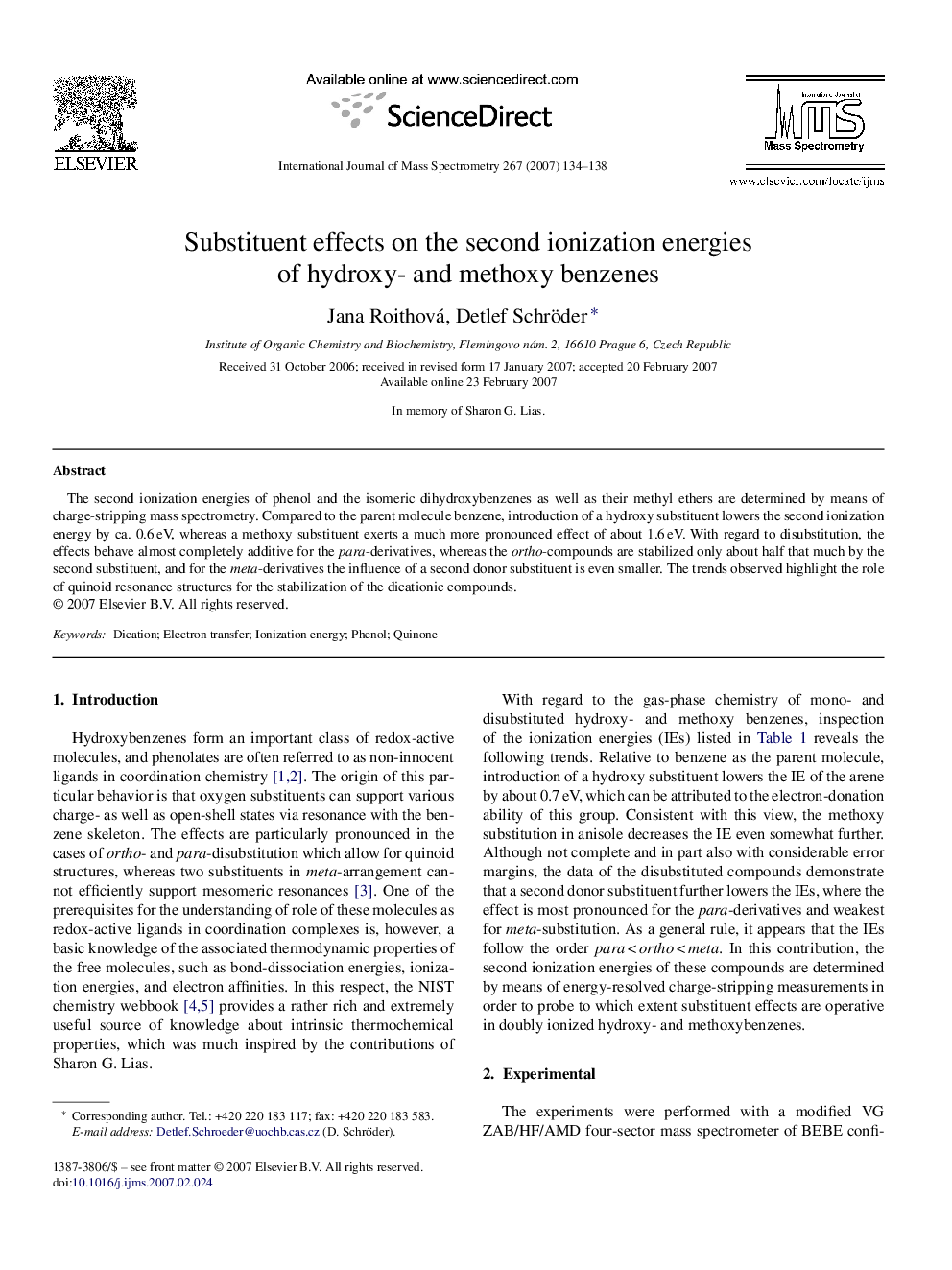| Article ID | Journal | Published Year | Pages | File Type |
|---|---|---|---|---|
| 1193358 | International Journal of Mass Spectrometry | 2007 | 5 Pages |
Abstract
The second ionization energies of phenol and the isomeric dihydroxybenzenes as well as their methyl ethers are determined by means of charge-stripping mass spectrometry. Compared to the parent molecule benzene, introduction of a hydroxy substituent lowers the second ionization energy by ca. 0.6Â eV, whereas a methoxy substituent exerts a much more pronounced effect of about 1.6Â eV. With regard to disubstitution, the effects behave almost completely additive for the para-derivatives, whereas the ortho-compounds are stabilized only about half that much by the second substituent, and for the meta-derivatives the influence of a second donor substituent is even smaller. The trends observed highlight the role of quinoid resonance structures for the stabilization of the dicationic compounds.
Related Topics
Physical Sciences and Engineering
Chemistry
Analytical Chemistry
Authors
Jana Roithová, Detlef Schröder,
